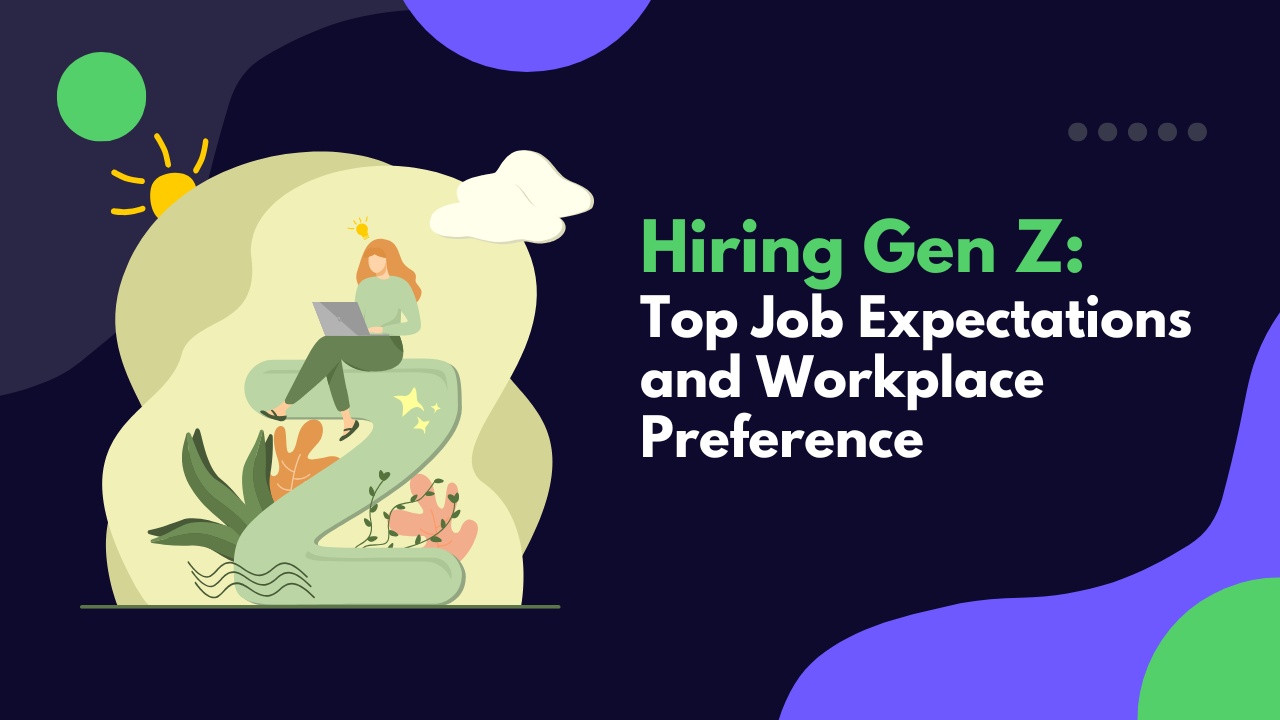In recent years, virtual career fairs have seen an explosive growth, transforming how recruiters connect with top talent. As businesses increasingly prioritize efficiency and accessibility, these digital events offer a compelling solution that traditional job fairs simply cannot match. For recruiters, mastering the nuances of online recruitment strategies is more critical now than ever. Welcome to “Best Practices for Virtual Career Fairs: A Recruiter’s Guide,” your definitive resource for navigating this evolving landscape.
In this blog post, we’ll delve into the differences between traditional and virtual career fairs, offering insights into why the latter may provide greater value for recruiters. You’ll discover how to choose the right virtual event platform, plan and prepare for a successful event, and engage effectively with candidates through innovative virtual booth designs.
Moreover, we’ll explore strategies for both lead generation during the event and measuring return on investment afterwards. Our guide aims to provide you with actionable insights to maximize your recruitment outcomes and adapt seamlessly to the virtual environment. Dive in, and let’s journey together into the future of recruitment, starting with the essentials of virtual career fairs.

Choosing the Right Virtual Career Fair Platform
Navigating the digital realm to select an optimal virtual career fair platform can significantly influence your recruitment success. The decision extends beyond basic functionality, setting the stage for efficient candidate engagement and a seamless recruiting experience.
First, you must consider the key factors that distinguish a competent platform. These include user-friendliness, customization options, cost-effectiveness, scalability, and security features. According to industry experts, platforms with intuitive user interfaces tend to enhance both recruiter and candidate experiences. Customization allows you to align the platform closely with your brand identity, ensuring your virtual presence is memorable and engaging.
Top Platforms for Virtual Career Fairs
Platforms like Brazen and Hopin are industry leaders, offering comprehensive features such as chat, video conferencing, and webinars. These platforms are tailored for virtual events and support a variety of interactive elements, boosting participant engagement.
Importance of ATS Integration
A critical aspect to consider is integration capability, particularly with your applicant tracking system (ATS). Seamless ATS integration ensures that all candidate data from the fair is efficiently captured and assimilated into your recruitment workflow. This integration enhances data accuracy and saves time by reducing manual data entry. In turn, this can help recruiters effectively track and follow up on candidate progress, thereby improving the recruitment funnel.
Using Comparison Tables for Informed Decisions
To make the best choice, it’s helpful to review platform comparison tables. These provide side-by-side evaluations of key features, pricing, user ratings, and other metrics, helping you make a well-informed decision that suits your recruitment needs.
Key Factors to Consider in a Virtual Career Fair Platform
To summarize the evaluation process:
-
- User Experience: Ensure the platform is easy to use for both recruiters and candidates.
-
- Customization Options: Choose a platform that offers various branding opportunities.
-
- Cost and Scalability: Assess the fee structures and the ability to scale with event size.
-
- Security Features: Prioritize platforms with robust security protocols for protecting sensitive information.
-
- ATS Integration: Verify seamless integration capabilities with your existing recruitment tools.
Moreover, it’s beneficial to consider platforms that offer analytics tools. These tools help track participant engagement and measure event success, allowing you to refine your strategies for future events.
By understanding and weighing these factors, you set your recruitment team up for a successful virtual career fair. With the right platform, you can efficiently connect with top talent in a virtual environment that mirrors the interactive and dynamic aspects of traditional job fairs.
As you move forward with selecting a platform, it’s vital to plan thoroughly for the event. This ensures that not only the software but also your entire approach to engaging with candidates is primed for success. In the next section, we will explore comprehensive pre-event planning and preparation strategies that position your team to engage meaningfully with prospective candidates.

Pre-Event Planning and Preparation for a Successful Virtual Career Fair
Effective pre-event planning lays the groundwork for a successful virtual career fair, akin to plotting a course before setting sail. With a strategic approach, you can ensure your recruitment team is cohesive and prepared to engage with prospective candidates meaningfully. Here’s how to make sure your planning stage sets the stage for a successful event.
Establish Clear Goals and Objectives
Firstly, establish clear goals and objectives for the virtual career fair. Define what success looks like—whether it’s a specific number of quality leads or a goal related to creating brand awareness. For instance, if targeting recent graduates from specific fields is a priority, articulate this aim clearly within your team. By setting these goals, every action can be aligned to achieve them, ensuring a focused approach.
Identifying and Understanding Your Target Audience
Identifying your target audience is the next crucial step. Understanding who you aim to attract will guide your content strategy and the tone of your communication. Consider developing detailed candidate personas to grasp potential attendees’ interests, motivations, and potential questions. Leveraging insights from previous fairs or market research can help tailor your strategy to the most desirable candidates.
Crafting an Engaging Content Strategy
A well-thought-out content strategy is vital to engage your audience effectively. This includes planning what information and interactive elements to incorporate within your virtual booth. You might utilize videos, live Q&A sessions, and informational downloads to address different facets of your company culture and values. Engaging content not only attracts candidates’ attention but also conveys your brand story compellingly.
Preparing Your Recruitment Team for Success
Ensuring that your team is well-prepared and aware of their roles cannot be overstated. Assign clear responsibilities and conduct meetings to discuss any challenges that may arise during the event. Practice makes perfect—technical rehearsals are essential. Running through the event process helps identify potential technical glitches ahead of time, ensuring a seamless experience for both recruiters and candidates.
Importance of Conducting Technical Rehearsals
Conducting technical rehearsals is akin to a dress rehearsal for a play. Testing the virtual event platform thoroughly helps confirm that all functionalities work as intended. From ensuring video interfaces and chat systems are operational to verifying data collection systems, a test run prevents last-minute surprises and boosts team confidence.
Creating a Pre-Event Preparation Checklist
Consider developing a checklist to streamline pre-event preparation:
- Define Goals and Objectives: Establish clear targets for the career fair.
- Identify Target Audience: Understand candidate demographics and preferences.
- Develop Content Strategy: Plan interactive and informative booth elements.
- Prepare Your Team: Assign roles and conduct comprehensive training.
- Run Technical Rehearsals: Test all aspects of the virtual platform to ensure smooth operation.
The Power of Clear Communication in Pre-Event Planning
Across all these steps, maintaining clear communication with your team is fundamental. According to the Harvard Business Review, clear communication enhances team performance and can improve engagement by as much as 25%.
Transitioning to Event Day with Confidence
Finally, having completed your groundwork, transitioning to the event day becomes a more organized and confident process. With clear objectives and a trained team, your virtual career fair is poised for success. As we move forward, the upcoming section will guide you through strategies for actively engaging with candidates during the event, ensuring meaningful interactions and effective lead capture strategies.
During the Virtual Career Fair: Engaging with Candidates
With meticulous pre-event preparations in place, stepping into the virtual career fair calls for dynamic engagement strategies. Imagine the virtual fair as a bustling market—each booth vying for attention, each interaction a chance to make a lasting impression. Your virtual booth is more than a digital space; it’s where your brand’s personality shines through interactive experiences designed to captivate candidates.
Your Virtual Booth
Start by creating an engaging virtual booth that leverages technology to simulate face-to-face interaction. A virtual booth should be visually appealing and functional, incorporating company branding and clear messaging about your values and culture. Use features like live chat or chatbots, webinars, and multimedia presentations to offer real-time engagement opportunities. For instance, companies like Microsoft and Deloitte have successfully utilized such elements to attract top talent and showcase their commitments to innovation 1.
Interactions and Communication
When incorporating interactive elements, consider how you can stand out. Live Q&A sessions and panel discussions can significantly boost candidate engagement and offer a glimpse of your company culture in action. Interactive quizzes or polls tailored to your industry can also energize the atmosphere, turning passive attendees into active participants. These elements not only maintain attention but also encourage deeper connections by providing memorable touchpoints.
Effective communication is key in virtual settings where physical cues are absent. Train your team to maintain a professional yet approachable demeanor, skilled in both verbal communication and the use of interactive tools. Active listening fosters meaningful exchanges; encourage your team to ask insightful questions and provide personalized responses, echoing platforms like LinkedIn’s successful user interactions 2. Use video conferencing to humanize your brand and ensure candidates leave with a positive perception.
Lead Capturing
Lead capture and qualification techniques are integral to maximizing your event’s ROI. Employ automated systems to seamlessly collect candidate information, categorizing leads based on interest and engagement level. Consider the use of registration forms or sign-up sheets that gather essential data, ensuring easy follow-up. You might say it’s the digital equivalent of collecting business cards at traditional fairs, streamlining recruitment workflows for effective candidate tracking.
Networking opportunities should also be strategically curated within the digital space, mirroring the organic mingling of in-person events. Encourage breakout sessions or one-on-one video chats, allowing spontaneous conversations to flourish. Virtual networking lounges can foster peer-to-peer interaction among candidates, broadening their connection with the industry and indirectly enhancing your company’s networking reach.
To address common concerns about virtual interactions, clarity and consistency in platform use are paramount. Provide clear instructions and support to help candidates navigate the virtual space effortlessly, reducing technology-related frustrations. Remember, a well-supported candidate feels valued, increasing the likelihood of positive follow-up interactions.
As you embark on implementing these engagement practices, consider future implications. Virtual career fairs, while necessitated by recent global shifts, offer a sustainable and scalable model for talent acquisition. They’re not merely a stopgap but a gateway to future-forward recruitment approaches. By embracing the digital transition, you’re poised to unlock new pathways to talent discovery, broaden your reach, and establish a progressive brand image.
With these strategies in hand, move confidently through your virtual career fair, leaving lasting impressions and cultivating rich candidate pools. Next, we will shift our attention to post-event follow-up and analysis, ensuring the insights gained here translate into actionable recruitment outcomes.
Post-Event Follow-Up and Analysis for Virtual Career Fairs
Having navigated the lively domain of virtual career fairs and engaged dynamically with candidates, the next pivotal step is post-event follow-up and analysis. Just like a ship returning with valuable cargo, your event has yielded data and potential leads that await strategic cultivation. Properly managing this process can significantly enhance your return on investment (ROI) and shape the success of future events.
Importance of Personalized Follow-Up Communication
Begin with personalized follow-up communication, which is essential for converting potential candidates into compelling prospects. Aim to send tailored messages to participants within 24-48 hours post-fair to maintain engagement momentum. These messages should not only express gratitude for attendance but also offer additional information on your company, including upcoming opportunities or resources. For example, you could include links to your company’s blog, case studies, or videos to provide deeper insights into your corporate culture and values, thereby incentivizing further interest.
Leveraging Data Analysis for Strategic Insights
Data analysis is another cornerstone of post-event activities. Leverage the analytical tools provided by your virtual career fair platform to scrutinize participation data comprehensively. Focus on key metrics such as the number of leads generated, engagement levels during sessions, and the effectiveness of interactive elements like live Q&As and webinars. Harnessing these insights can help you understand what resonated well with attendees and where improvements can be made. Some areas to analyze include:
- Engagement Metrics: Identify which sessions had the highest attendance.
- Lead Qualification: Segment leads based on engagement to prioritize follow-ups.
- Content Effectiveness: Analyze which content types (videos, presentations, etc.) led to the most successful interactions.
Continuous Improvement Through Internal Debriefs
Transitioning to strategies for continuous improvement, consider conducting internal debriefs with your team to assess the challenges and victories experienced during the event. Encouraging open discussions allows team members to share insights and suggestions, fostering a culture of learning and adaptation. Additionally, gathering direct feedback from participants through post-event surveys can provide external perspectives on how to enhance future experiences.
Maintaining an Organized Candidate Database
Practical follow-up doesn’t end with communication—it also involves keeping an organized database of candidates. Regularly updating this database based on new interactions ensures that you’re ready for future recruitment needs, similar to how a well-stocked kitchen is prepared for surprise guests. Implementing a structured CRM system helps streamline this process, allowing you to track candidate progress seamlessly through your recruitment pipeline.
Maximizing the ROI of Virtual Career Faairs
In essence, post-event follow-up and analysis close the loop on your virtual career fair efforts, ensuring no stone is left unturned. By harnessing the power of insightful data and genuine engagement, your virtual career fair transforms from a singular event into a cornerstone of your long-term recruitment strategy. The lessons learned from each event will help shape future fairs, driving continuous improvement in your recruitment approach.
Conclusion: Thriving in the Digital Recruitment Landscape
Summarizing the journey of a successful virtual career fair, we began by exploring the rise of virtual fairs, moved through careful planning and preparation, engaged candidates meaningfully during the event, and now conclude with strategic post-event initiatives. By embracing these best practices, recruiters can thrive in the evolving digital recruitment landscape. Virtual career fairs are not just a temporary trend but a powerful gateway to innovative and efficient recruitment strategies.
Content
- Choosing the Right Virtual Career Fair Platform
- Pre-Event Planning and Preparation for a Successful Virtual Career Fair
- During the Virtual Career Fair: Engaging with Candidates
- Lead Capturing
- Post-Event Follow-Up and Analysis for Virtual Career Fairs
- Conclusion: Thriving in the Digital Recruitment Landscape




